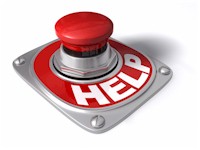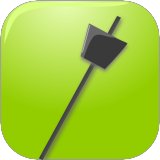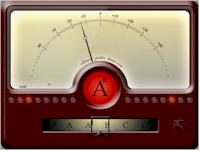
Practice Resources
Practice advice, how-to's, online & phone-app metronomes and tuners.
Below is a Q & A with a parent of a seven-year old girl who came to me for piano lessons. Many of the answers apply to older beginners, as well.
Q: How often should my child practice?
A: Optimally, a student learning an instrument should practice every day. On lesson day, perhaps just a warm-up will be sufficient.
Q: How much time should she practice each day?
A: Eventually, the amount of practice time each day should be, at least, the amount of her lesson time. So, because she will have a half-hour lesson, she should work up to practicing a half-hour each day. She'll start with fifteen minutes-a-day for the first month, then twenty minutes-a-day for the second month, and so on. After 3 months, she'll be up to a half-hour each day.
Q: What if she can't practice everyday or can't practice for the right amount of time?
A: I tell my students that 'your most important goal is get to your instrument every day, even if, on some days, it is for a short amount of time.' The importance of this is to establish and reinforce the daily habit. Twenty-four hour reinforcement is critical. With children, frequency is more important than duration.
As her teacher, I'll am looking for progress each week. My expectation is that, after a week of practice, a student will be able to master, at least, one piece and go on to a new piece. Students who don't practice enough [or don't practice properly] run the risk of not passing and having to redo their pieces for an additional week. It doesn't sound like a great loss, but it can be discouraging to some children.
Q: How long does it usually take for a student to get through a piano course?
A: Where a very dedicated student can run though an entire piano course in six months, a student that is less dedicated will take twice, or three times as long. That is reason why we require daily practice.
Generally, a child needs a very systematic stepwise approach to learning. All beginners must WORK OUT LOUD while practicing. If your child is not saying anything while practicing, she is doing it wrong!
These are the steps I suggest for young beginners to learn a piece of piano music:
- Listen to the CD/DVD:
- 1. Sing Along: Play the CD and have fun learning what the piece will sound like.
- Practice on the Cover:
- 2. Point and Say Durational Syllables: Point to the notes on the page and and say the the durational syllables (tahs) or count numbers aloud. For fun, you can "point and say" along with the recording.
- 3. Tap and Say Durational Syllables: On the piano cover (or on a table top), tap the rhythm with the correct hand and SAY the the durational syllables (tahs) or count numbers aloud. For fun, you can "tap and say" along with the recording.
- 4. "Play" and Say Finger Numbers: On the piano cover (or on a table top), "play" the fingerings and say the the finger numbers aloud.
- Practice on the Keys:
- * Find your hand positions: Check the starting finger number for each hand.
- 5. Play and Say Finger Numbers: Play and say finger numbers aloud.
- 6. Play and Say Durational Syllables: Play and say the durational syllables (tahs) aloud.
- 7. Play Along With the CD/DVD: At practice tempo, play along with the CD and say durational syllables (tahs) aloud.
- Once each day:
- 8. Point and Say the Note-Names: Point to the notes one-at-a-time and say their letter names aloud.
Ideally, each step should be mastered before going on the to the next step. Most children are being taught durational syllables for rhythm "counting" in elementary school. It is best that they feel well grounded in beat and basic rhythm before transitioning to counting with numbers sometime after their first year of study.
Finally, it is essential that each piece is mastered one-at-a-time! Though 3 pieces may have been assigned, the first piece must be mastered before going on to the next piece. After a piece has been mastered, it should played daily so as to not lose its mastery.
These are the steps I suggest for young beginners to learn a piece of guitar music:
- Listen to the CD/DVD:
- 1. Sing Along: Play the CD and have fun learning what the piece will sound like.
- Rhythm Practice while you read the music:
- 2. Point and Say: point to the notes on the page and and say the the durational syllables (tahs) or count numbers aloud. For fun, you can "point and say" along with the recording.
- 3. Tap and Say: On the back of the guitar (or on a table top), tap the rhythm and SAY the the durational syllables (tahs) or count numbers aloud. For fun, you can "tap and say" along with the recording.
- Play "Air Guitar" while you read the music:
- 4. Move and Say - Left: Move LH fingers and say the LH finger numbers aloud.
- 5. Move and Say - Right: Move RH fingers and say the RH finger letters aloud.
- Practice on the Guitar:
- * Check your holding position: Check that your right forearm is above the bridge. Check that your left thumb is behind the neck.
- * Find your starting finger/hand positions: Check your left hand position. Check your right hand position.
- 6. Play and Say Letters: Play and say the RH finger letters aloud.
- 7. Play and Say Tahs/Counts: Play and say the durational syllables (tahs) or count numbers aloud.
- 8. Play Along With the CD/DVD: At practice tempo (at a slow speed) play and say the durational syllables (tahs) or count numbers aloud.
- Once each day:
- 9. Point and Say the Note-Names: Point to the notes one-at-a-time and say their letter names aloud.
Ideally, each step should be mastered before going on the to the next step. Most children are being taught durational syllables for rhythm "counting" in elementary school. It is best that they feel well grounded in beat and basic rhythm before transitioning to counting with numbers sometime after their first year of study.
Finally, it is essential that each piece is mastered one-at-a-time! Though 3 pieces may have been assigned, the first piece must be mastered before going on to the next piece. After a piece has been mastered, it should played daily so as to not lose its mastery.
It may be overkill for the older beginner to follow the same steps as a child to learn a piece of music (see above), many older beginners would benefit greatly to follow the same progression of steps. Where children find comfort in a system, older beginners will be tempted to cut to the chase. Do what works for your learning style.
Why buy a metronome when you can use a free online metronome instead? Choose a beat speed. Hit the space bar to start and stop.

→Seventh String Software Online Metronome: seventhstring.com
Metronome Online: metronomeonline.com
Web Metronome: webmetronome.com
Best Metronome: bestmetronome.com
Own a smart phone? These are good choices. All from Amazon and all free. An alternative is to use the search function in your phone's "App Store" and search for "Metronome."

Metronome Beats by Stonekick: Amazon
Metronome by Web Flex Media LLC: Amazon
ZyMi Metronome FREE by ZybNet: Amazon
Tap Metronome Lite by Batalsoft: Amazon

Guitar for Beginners Online Tuner: guitarforbeginners.com
HotfretsGuitar Tuner: hotfrets.com
How to Tune Your Guitar: cnx.org
NP-Guitar: npguitar.com
Ukelele Tricks Ukelele Tuner: Ukelele Tuner
World Guitar Tuner: worldguitar.com
Own a smart phone? These are good choices. All from Amazon and all free. An alternative is to use the search function in your phone's "App Store" and search for "Chromatic Tuner" or "Guitar Tuner."

Acoustic Guitar Tuner by Web Flex Media LLC: Amazon
Cifra Club Tuner: Amazon
Fine Chromatic Tuner Pro: Amazon
Guitar Tuner by Cellulica: Amazon
Guitar Tuner Free by SoundPro: Amazon
Guitar Tuner by Ultimate Career Guides, Inc.: Amazon
GuiTune - Guitar Tuner!: Amazon
PitchLab Pro: Amazon
PitchPerfect Free Guitar Tuner : Amazon
Tuner - gStrings: Amazon
Tun-d Free Guitar Tuner : Amazon
Ukulele Tuner by Web Flex Media LLC: Amazon
NEO Tuner - Chromatic Tuner (Guitar, Bass, Violin, Viola, etc): Amazon
"Transcribe! is the world's leading software for helping musicians to work out music from recordings. It is also used by many people for play-along practice, and also for speech transcription. We offer various handy things for free such as the Fake Book Index, a Tuner, a Metronome..."
Are songs recorded too fast to practice with? No problem! This invaluable software allows you slow down a recorded song so that it is much easier to practice with it. You can also change the key of a song to be able to play it in easier key. As its name describes, it will even read the frequencies of the recording and make note suggestions on a keyboard within the software. Frustrated with sheet music? It doesn't sound like the recording? This software has ear you may not have to figure out what was played!
Transcribe:
Seventh String